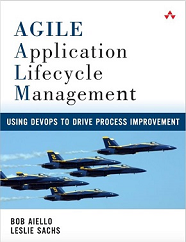Personality Matters- The Danger of Agreeable People
By Leslie Sachs
Technology professionals often need to get along with some interesting personalities. While sales and management professionals pride themselves on their people skills, some technology geeks find it challenging to deal with others, especially those with noticeable quirks. I work closely with a number of interesting personalities in our consulting practice- including our lead principal consultant, a well-known expert in configuration management. Truth be told, sometimes stubborn opinions can be tough to accept even when the person is an industry expert. Sometimes, I wish that the person that I am dealing with could be just a little bit more amicable. However, it is equally true that too much of a good thing certainly comes with its own set of challenges. In fact, dealing with overly agreeable people can be fraught with obstacles, although quite different than those usually associated with the stereotypical stubborn geek who seems to not be able to bend or compromise. This article will help you understand and deal with the unexpectedly challenging aspects that you may experience interacting with some agreeable people.
Psychologists have spent decades researching personality [1] and formed many different models to explain the behaviors that we may observe in the people we interact with on a daily basis. One of the most well-respected models, known by the acronym OCEAN, is the five factor model based upon many studies. The five factors, openness, conscientiousness, extraversion, agreeableness, and neuroticism describe essential dimensions of personality. We all have some degree of each of these core qualities in our own personality, although the specific balance of each factor can certainly vary considerably from one individual to another. Successful sales professionals are typically high in extraversion while police and law enforcement personnel are often focused on conscientiousness. Folks who have personalities more geared towards being agreeable typically exhibit highly social behaviors and enjoy the company of others, often demonstrating more kindness, empathy and affection for others than the average person. Sometimes these people come across as “pack animals” who seem to be most comfortable operating within the context of a group. By definition, folks who are agreeable prefer to get along and their tendency to reflexively concur with others is exactly why problems may arise.
The dysfunctional side of agreeableness manifests itself in extreme conflict avoidance. These are the people who just cannot take a stand and always seem to forgo their own will for the sake of “getting along” with others. In our book on configuration management best practices, we discussed the middle child who is often the peacemaker in the family [3]. This behavior is often beneficial and can come in handy in helping others understand one another’s differing views. Unfortunately, though, being agreeable becomes dysfunctional when the person just cannot take a stand or will not engage in uncomfortable conversations, including what most of us would regard as necessary negotiation. The overly agreeable person will often avoid letting you know where they really stand on the issues and will typically do almost anything to avoid conflict. Agreeableness is nice in appropriate amounts, but someone who habitually goes along with the crowd may reach a breaking point where they just cannot take the disparity between what they say and what they feel and, at such stressful times, their response may be extreme as it has been building up for so long.
Technology professionals often need to analyze tough problems and collaborate to arrive at consensus on how best to address and resolve problems. It’s no surprise that smart people don’t always agree on how to fix complex technology problems. When dealing with a systems outage, the situation may be very tense and effective technology professionals must be able to express their views and listen to the opinions of others, too. In a crisis, tact and diplomacy may be less than optimal and people with a thin skin may find it hard to cope with the stress of feeling that they are under attack. Some people back off and actually become passive-aggressive, allowing those with either positional power or perhaps just a loud voice to make the decisions – which may or may not be the optimal choice. Effective leaders create environments where everyone can feel safe expressing their professional views and experience-based opinions.
Dealing with a smart analytical person who tries to steer clear of conflict may require some very strong people skills and this is exactly where you can emerge as a leader within your group. Creating an environment where everyone’s opinion is expressed and the team collaborates to reach consensus is by far the best problem-solving strategy. The most effective teams frequently consist of diverse personality types and have a common value of respect and consideration for each person. Although most people enjoy the validation of hearing opinions in alignment with their own views, confident members of successful technology teams work together to encourage the selection of correct decisions based upon facts, whether they come from the most popular member of the team or the quiet non-confrontational guy in the corner who just happens to really know how to configure the software to get your system up and running!
References:
[1] Byrne, Donn. 1974. An Introduction to Personality: Research, Theory, and Applications. Prentice-Hall Psychology Series.
[2] Wiggins, Jerry S. PhD (Editor), The Five-Factor Model of Personality: Theoretical Perspectives The Guilford Press; 1996
[3] Aiello, Bob and Leslie Sachs. 2010. Configuration Management Best Practices: Practical Methods that Work in the Real World. Addison-Wesley Professional.
[4] Harvey Robbins and Michael Finley, Why Teams Don’t Work – What Went Wrong and How to Make it Right, Peterson’s Pacesetter Books, 1995
[5] Meyer Friedman, Type A Behavior: Its Diagnosis and Treatment (Prevention in Practice Library). Springer 1996



















